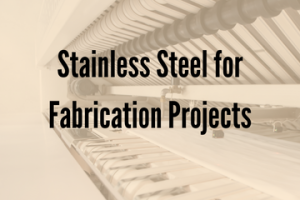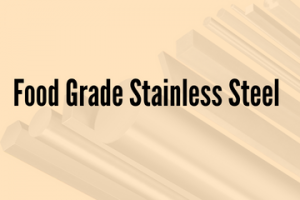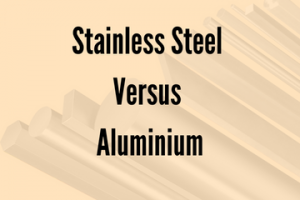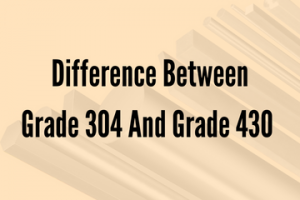 We are living in a world made of stainless steel. But have you ever thought what made stainless steel to mark its presence everywhere? The mystery behind this fact is that not only its properties like higher corrosion resistance, hardness, toughness and machinability but also its fine weldability help engineers to use it for different applications under multiple operating conditions. As we all know that there are four main types of Stainless Steel namely Austenitic, Martensitic, Ferritic and Duplex. They differ from each other in terms of their chemical composition, microstructure and phases hence they will require different types of welding treatment accordingly and will get prone to different types of welding defects. Let us now have an insight category wise as per different grade’s composition:
We are living in a world made of stainless steel. But have you ever thought what made stainless steel to mark its presence everywhere? The mystery behind this fact is that not only its properties like higher corrosion resistance, hardness, toughness and machinability but also its fine weldability help engineers to use it for different applications under multiple operating conditions. As we all know that there are four main types of Stainless Steel namely Austenitic, Martensitic, Ferritic and Duplex. They differ from each other in terms of their chemical composition, microstructure and phases hence they will require different types of welding treatment accordingly and will get prone to different types of welding defects. Let us now have an insight category wise as per different grade’s composition:
Austenitic Stainless Steel Welding Guide
These are quite good for welding since they remain unhardened on cooling down to room temperature, exhibit good toughness and possess great strength allowing high pressure welding process in arc welding operations like TIG, MIG and GTAW. This class of stainless steel also saves cost of pre and post welding treatments. The heat affected zone (HAZ) is always prone to cracking. This risk can be minimized by using a different alloying filler material. For example, in case of SS 304 welding, SS 308 electrode is used as filler substance. Moreover ferrite and sigma phase formation is also a kind of trouble while welding stainless steel which can be solved by using electrode containing 3-5% of ferrite material and on other side sigma phase can be nullified by subjecting the weld metal to 900 degree Celsius for short duration.
Ferritic Stainless Steel Welding Guide
These are quite sensitive to grain growth formation, exhibit single phase structure and are non hardenable, hence suitable enough for fusion welding.
However, a coarse grained structure invites cracking and low toughness in Heat Affected Zone of thick sectioned material while in thin sections, it do not happen. The excess grain growth can be avoided by heating at low temperature i.e, 250 degree Celsius and by adding Al, V, Zr metals during welding in the form of a filler material. Although preheating will reduce HAZ cooling rate that eliminates residual stresses but it will not restrict grain growth. Depending upon the material composition, preheating temperature should be kept in range 50-250 degree Celsius.
Martensitic Stainless Steel Welding Guide
The major difference between austenitic and ferritic grades as compared with martensitic stainless steel with respect to welding is the extreme hard HAZ martensitic structure and material composition is in synchronization with filler material. This hardness in HAZ may cause hydrogen cracking which increases with increase in carbon content. This can be minimized by using low hydrogen processes like MIG or TIG. The pre welding process requires a temperature of 200-300 degree Celsius while post weld treatment needs temperature in the range of 650-750 degree Celsius which allows hydrogen to escape from HAZ. On the other, thin section welds upto 3-5 mm in thickness do not require pre and post weld treatments.
Duplex Stainless Steel Welding Guide
Austenitic and Ferritic grades contribute equally in forming two phase structure in duplex stainless steel. Duplex are easy to weld but care should be taken while providing ignition temperature in order to give better weld finish and strength. Since they have little nitrogen in them for stabilising austenitic phase in the overall composition, so a filler material or a shielding gas with nitrogen content in them will be excellent for having fine welds. They also do not require preheating.
“Last but not the least, in a nutshell, we can say that stainless steel would be tightly held as it could be finely weld.”
About Us
Ambica Steels Limited is one of the leading manufacturers of Stainless Steel in India. Our product range includes Precision Bright round bars, Square/Hexagonal/ Flat bars in HRAP and Cold drawn conditions. We also manufacture Billets and Ingots.
For any further information, please visit our Company website Ambica Steels or feel free to get in touch with us at info@ambicasteels.com.
Author Bio
Eresh Sharma
The author is a Sales Engineer with Ambica Steels Limited. In his free time, he likes to write blogs and articles on Materials Science and Engineering, Technology, Steel Industries, Lifestyle and much more. The author possesses an experience of 1 year with Ambica Steels Limited.





